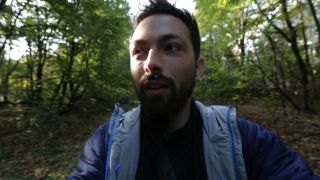Video: Science Is Infectious in YouTube's Veritasium

When it comes to conveying the excitement of science, a good video is a powerful communicator.
Science media can transport us to places we've never been and show us things we've never seen before. Through video makers' eyes — and cameras — we can visit remote corners of the planet, witness research in action in laboratories and in the field, or observe experiments that help us to better understand the world around us and how it works.
Live Science invites you to join us as we investigate some of YouTube's most intriguing and entertaining science channels, challenging viewers to question what they think they know, and to discover things that they never imagined.
Veritasium: An Element of Truth
Derek Muller, the creator and host of "Veritasium," launched his channel on YouTube in 2010. He currently describes it as, "Videos about science, education, and anything else I find interesting."
And that covers a lot of ground. Over the years Muller's topics have included the most radioactive places on Earth, why astronauts are weightless, and whether too much silence can drive you crazy.
His "Experiments" playlist presents video examples of hands-on science activities, with unusual learning opportunities such as making plasma with grapes in a microwave and crafting solid nitrogen. Many of the experiments can be performed at home or in classrooms, according to Muller's playlist description, though he adds that some experiments can only be carried out in a lab.
Recently, Muller took a trip inside what he described as "the world's most important freezer" — the Svalbard Global Seed Bank in Norway, a massive vault housing 860,000 agricultural seed samples representing crop diversity from around the world.
Sign up for the Live Science daily newsletter now
Get the world’s most fascinating discoveries delivered straight to your inbox.
No matter what the topic of his videos, Muller's gleeful enthusiasm as the channel's host is infectious. His obvious enjoyment and curiosity about his subjects, and his active camera energize the channel, making the science of Veritasium accessible and fun to watch.
Got a favorite science channel on YouTube that you think we should feature? Tell us about it in the comments or on Twitter and Facebook!
Original article on Live Science.

Mindy Weisberger is an editor at Scholastic and a former Live Science channel editor and senior writer. She has reported on general science, covering climate change, paleontology, biology, and space. Mindy studied film at Columbia University; prior to Live Science she produced, wrote and directed media for the American Museum of Natural History in New York City. Her videos about dinosaurs, astrophysics, biodiversity and evolution appear in museums and science centers worldwide, earning awards such as the CINE Golden Eagle and the Communicator Award of Excellence. Her writing has also appeared in Scientific American, The Washington Post and How It Works Magazine.
Most Popular


